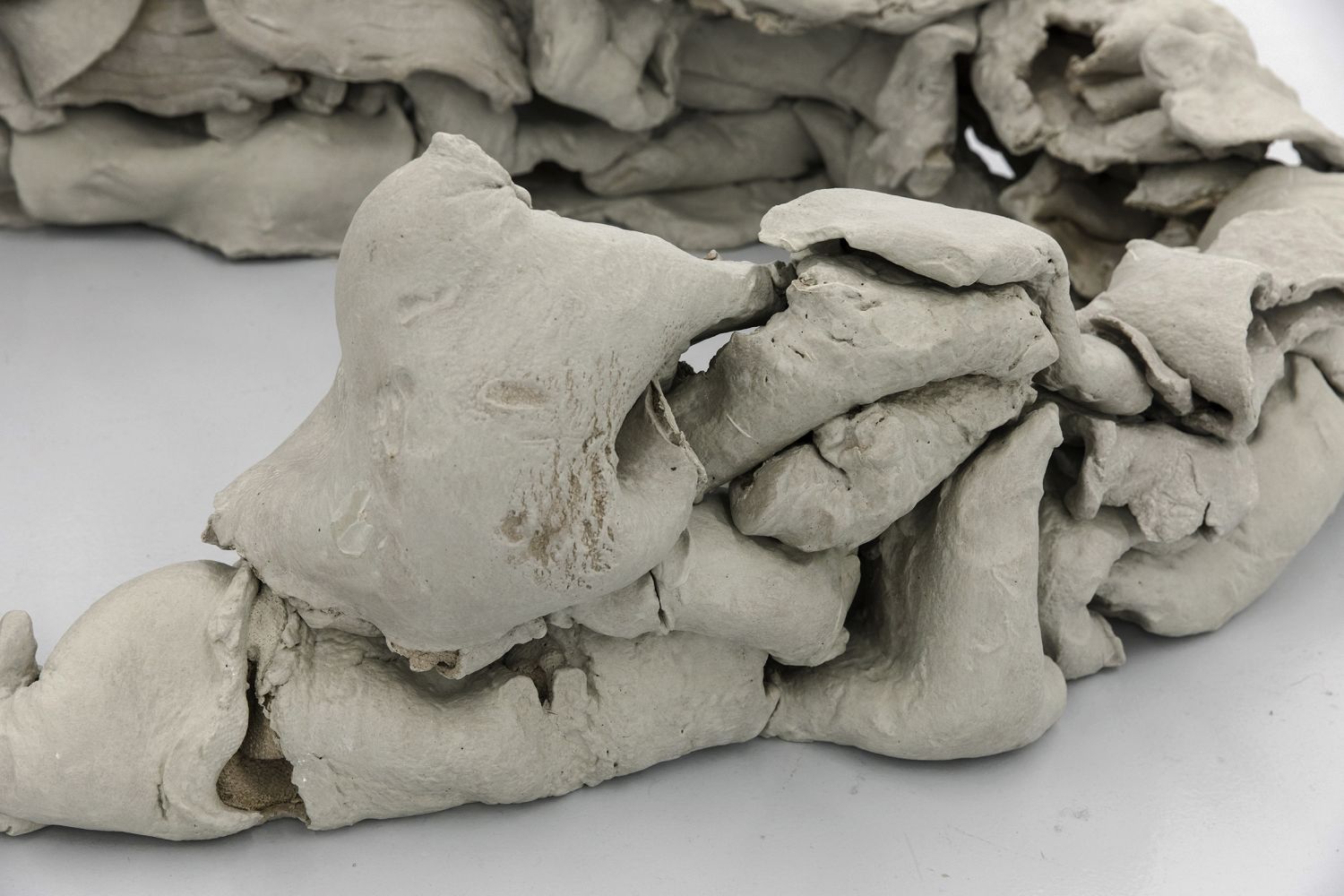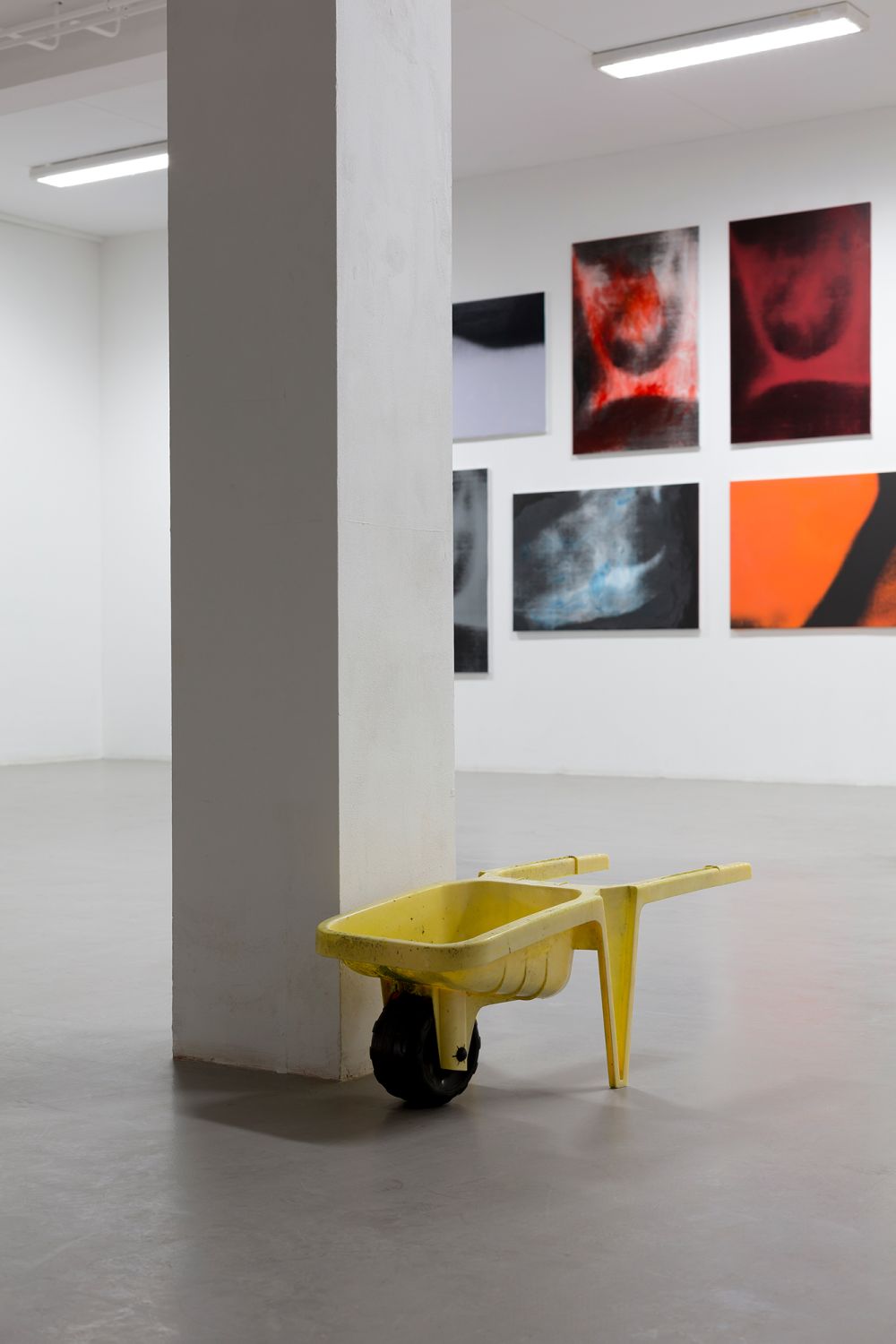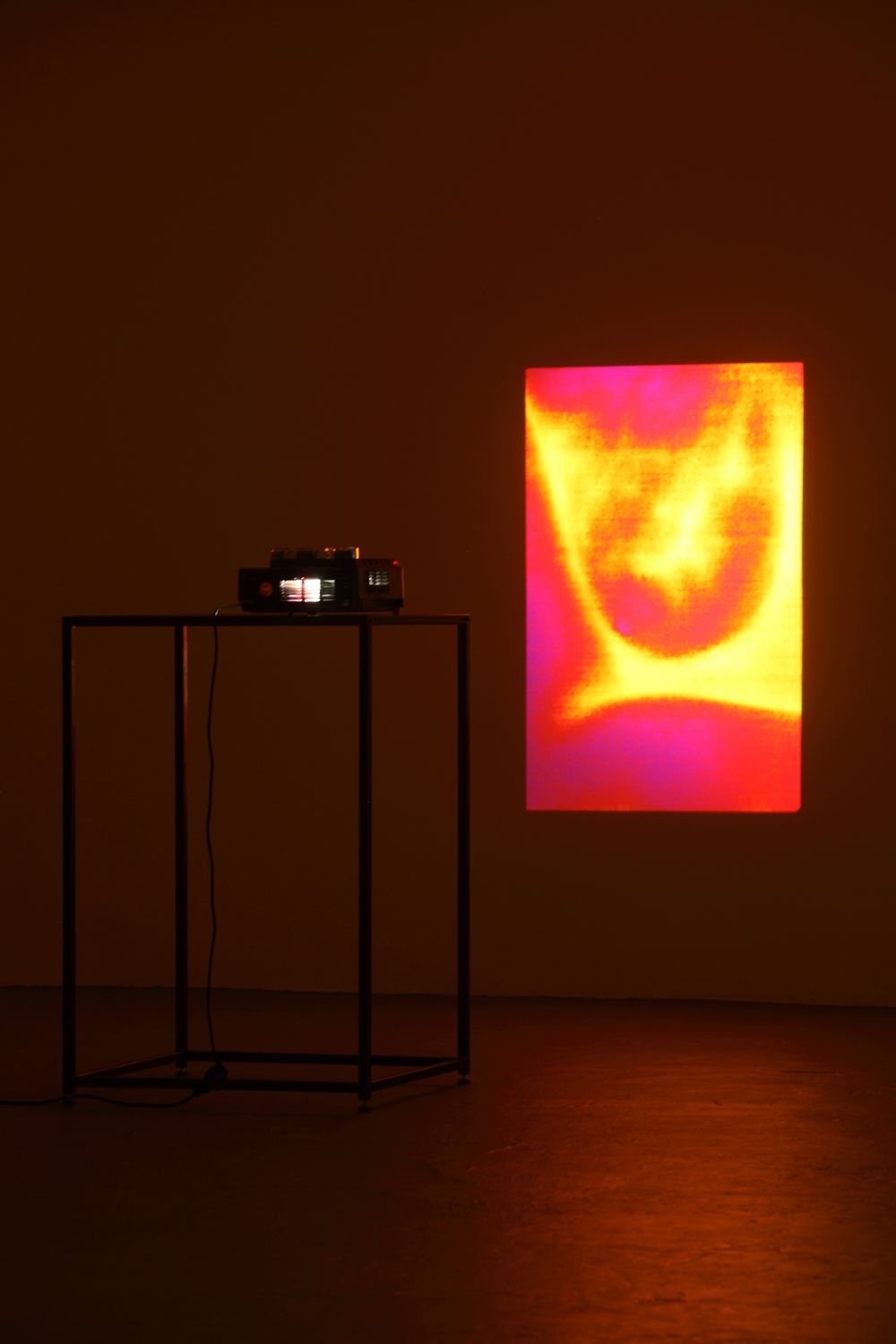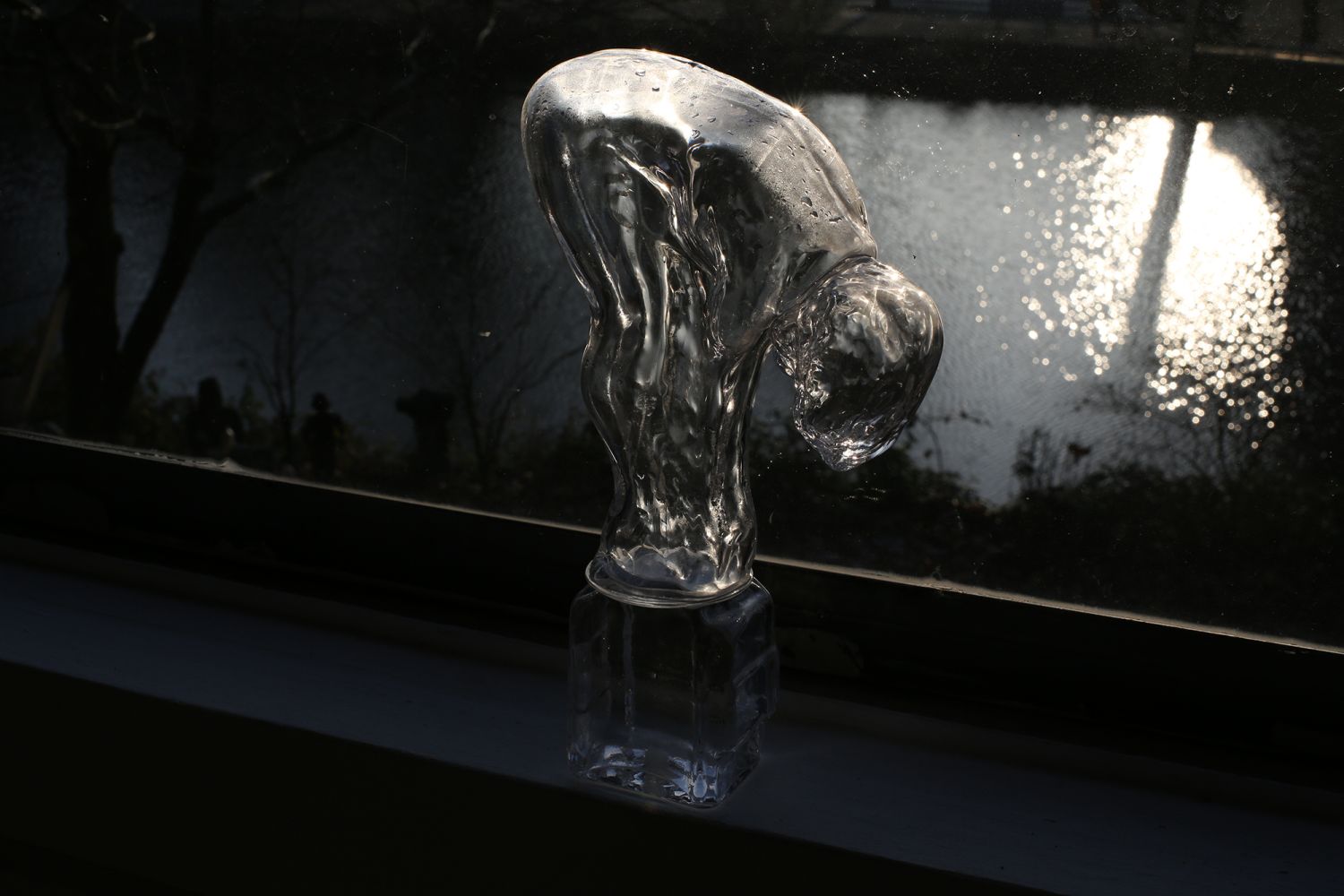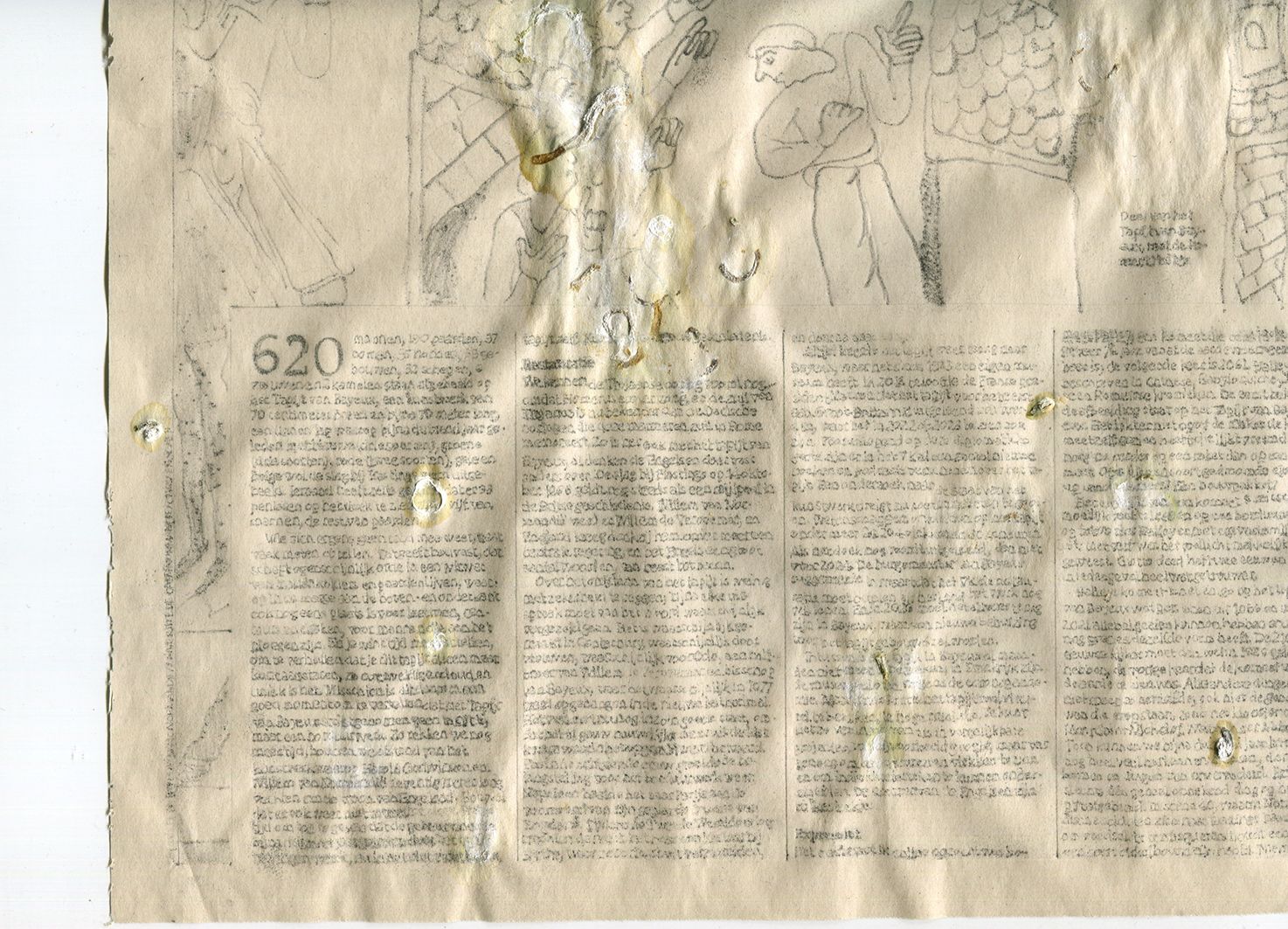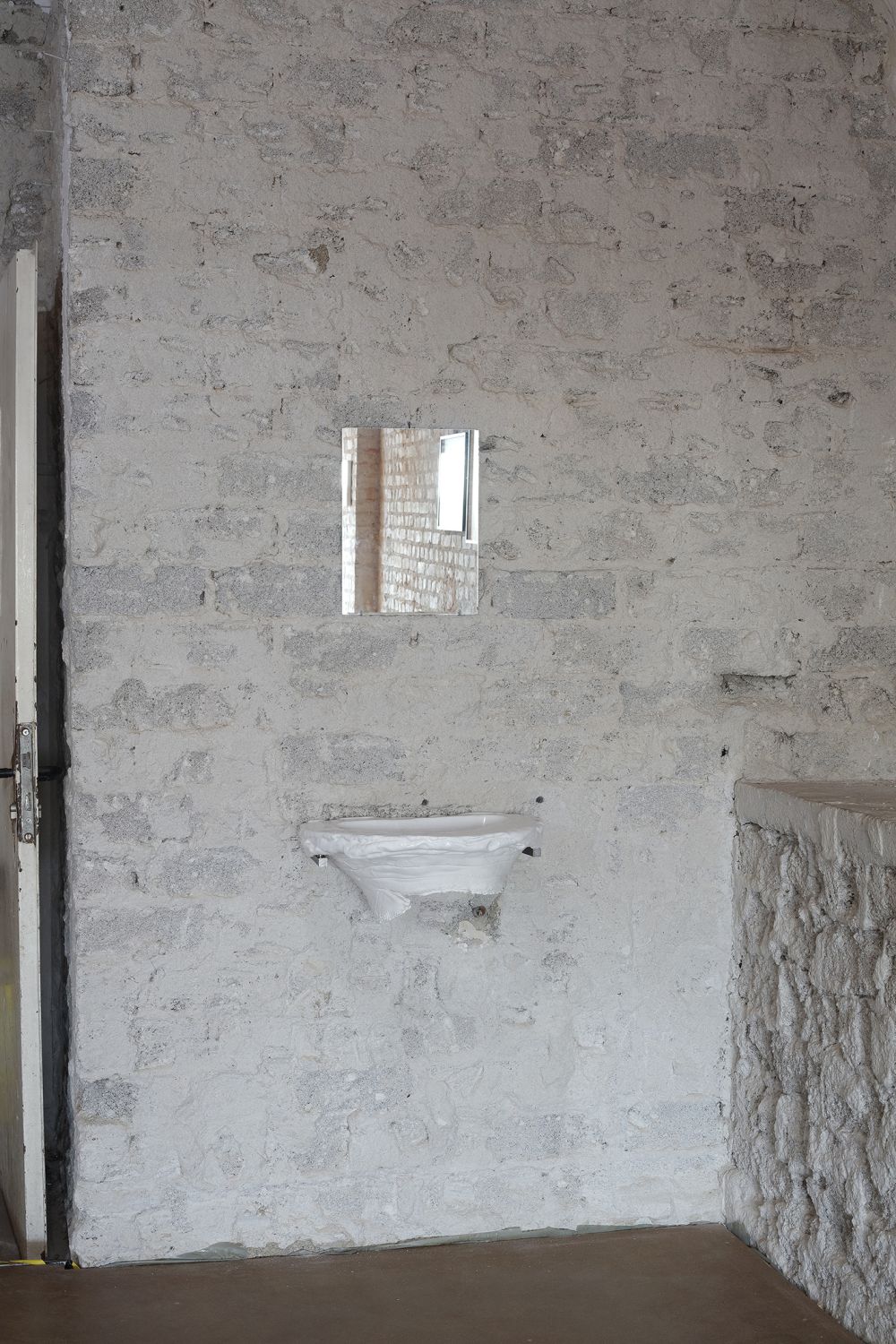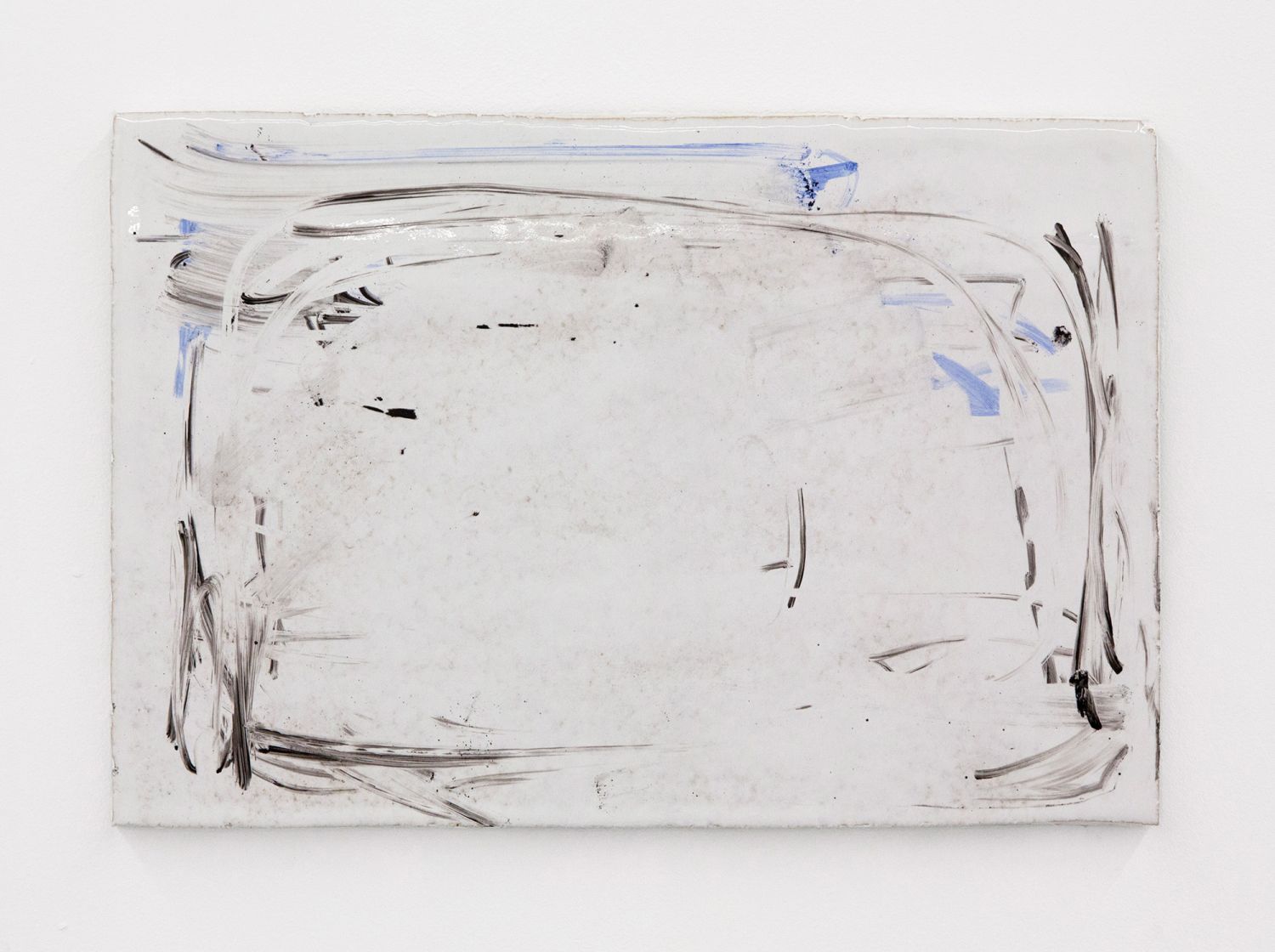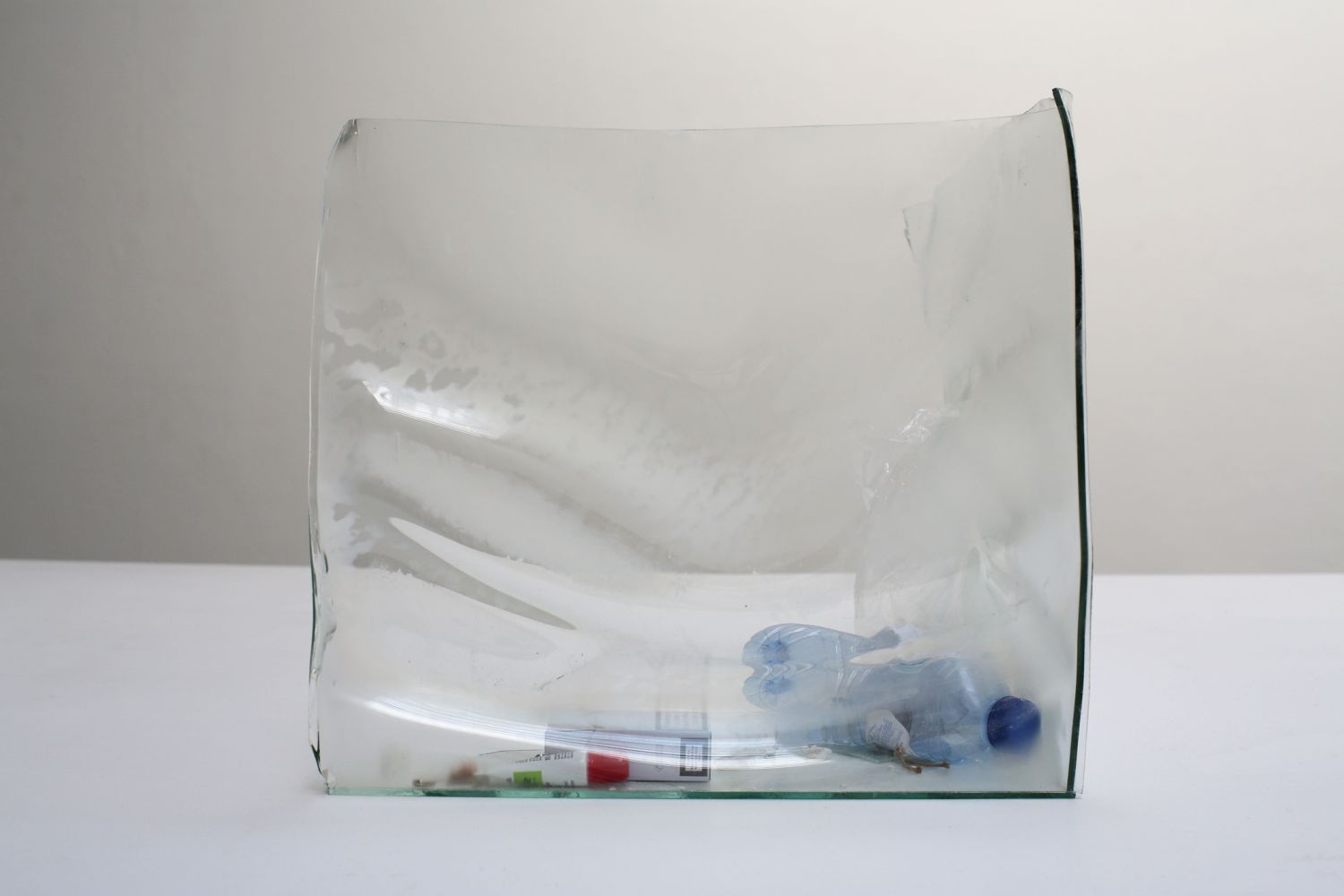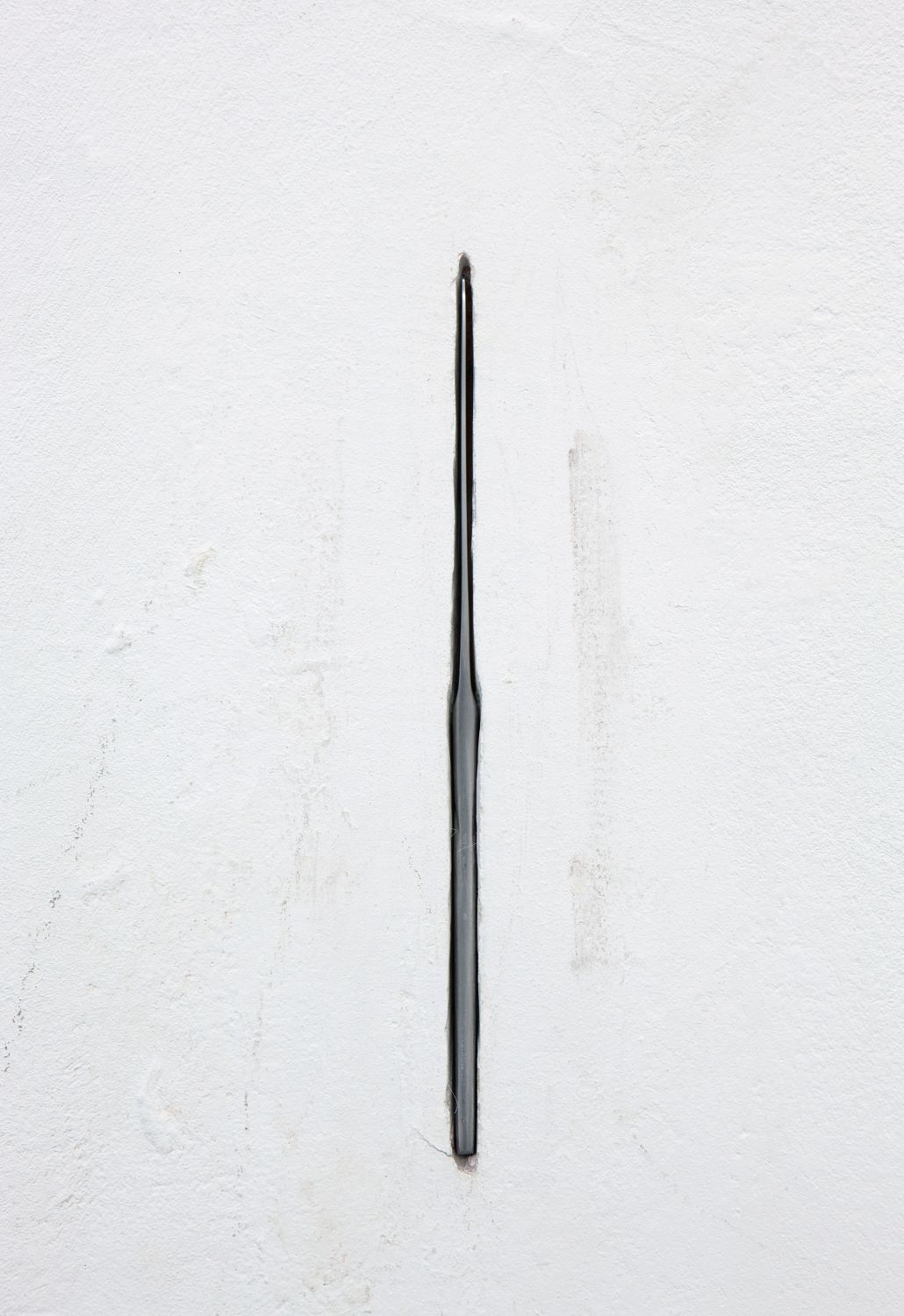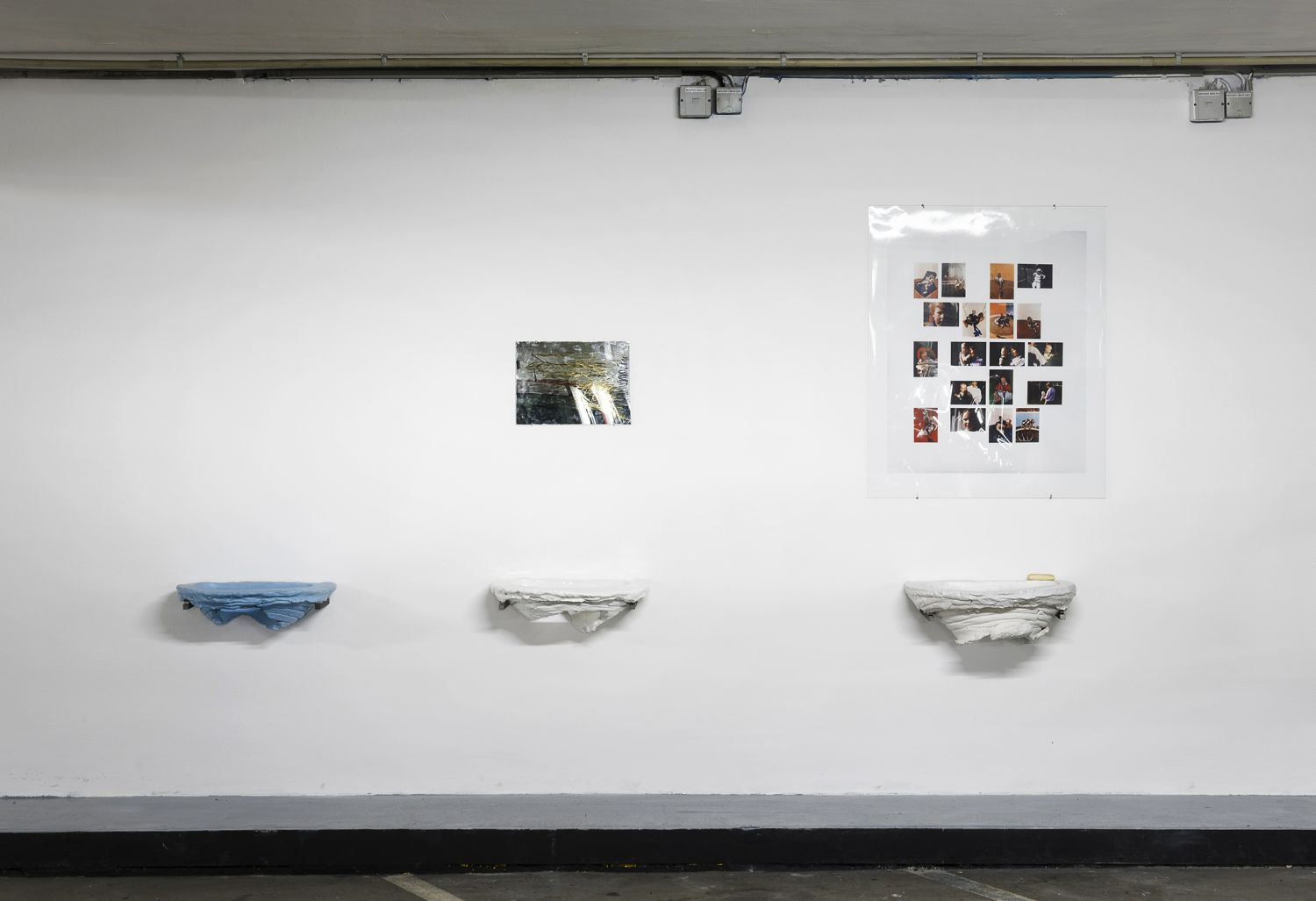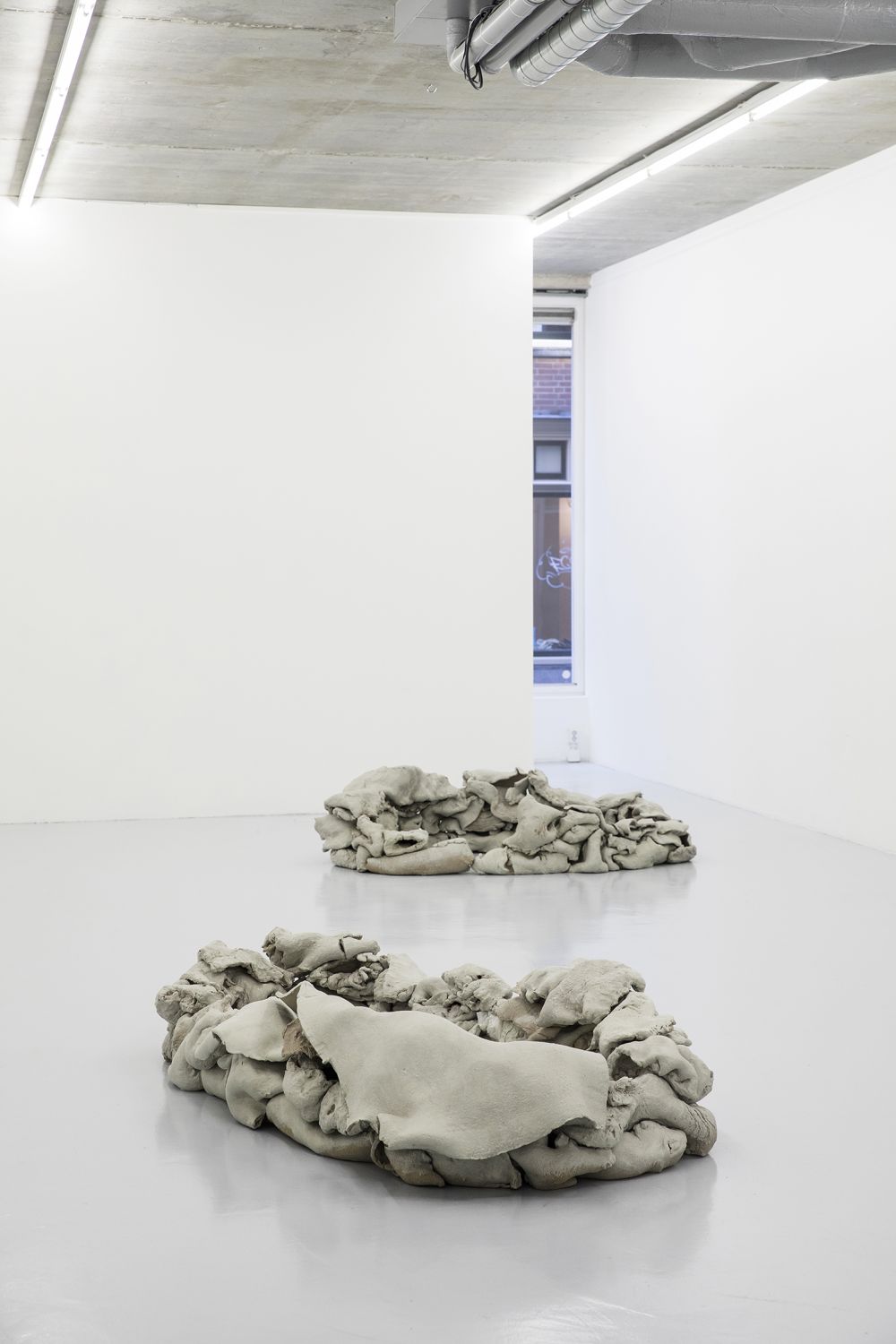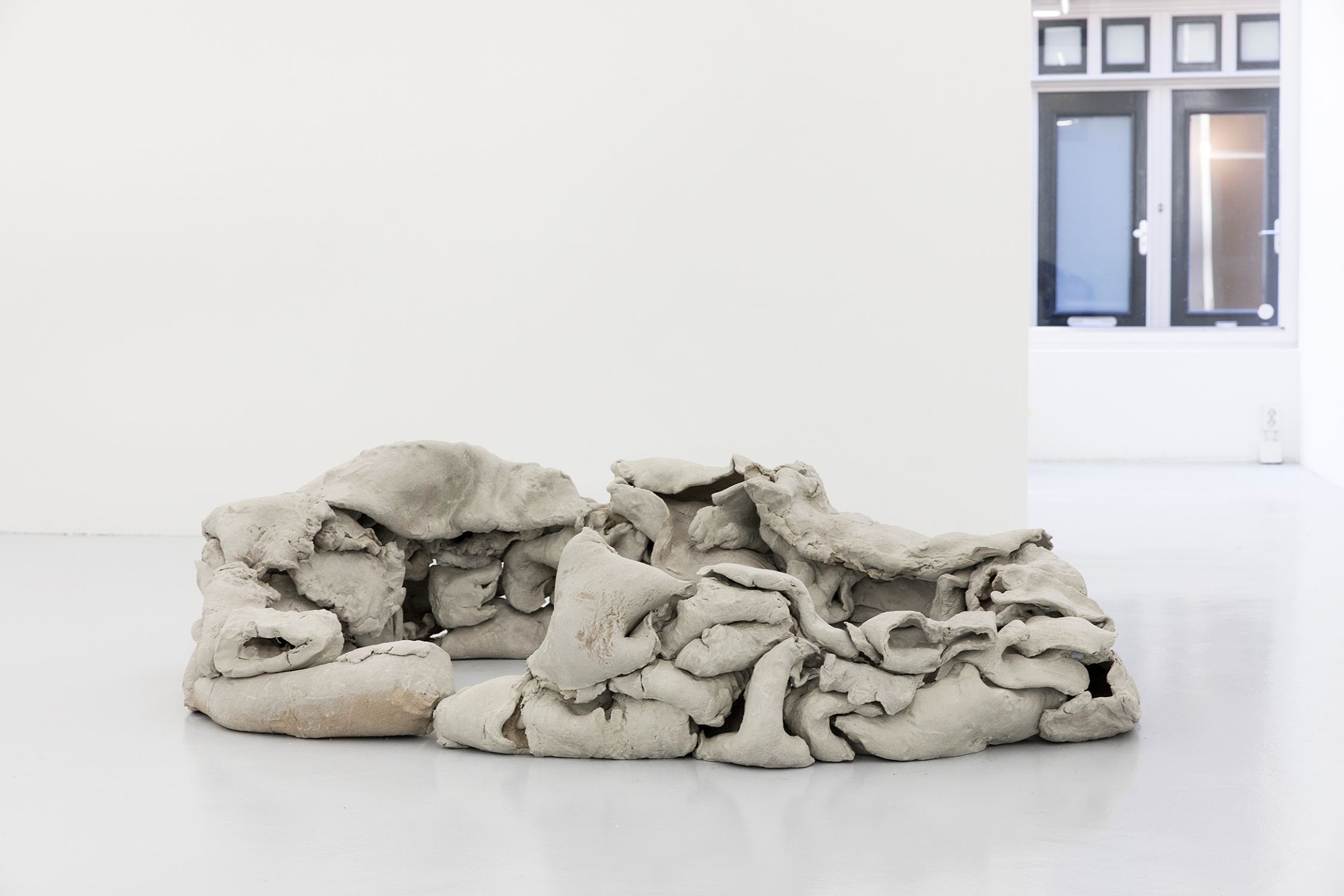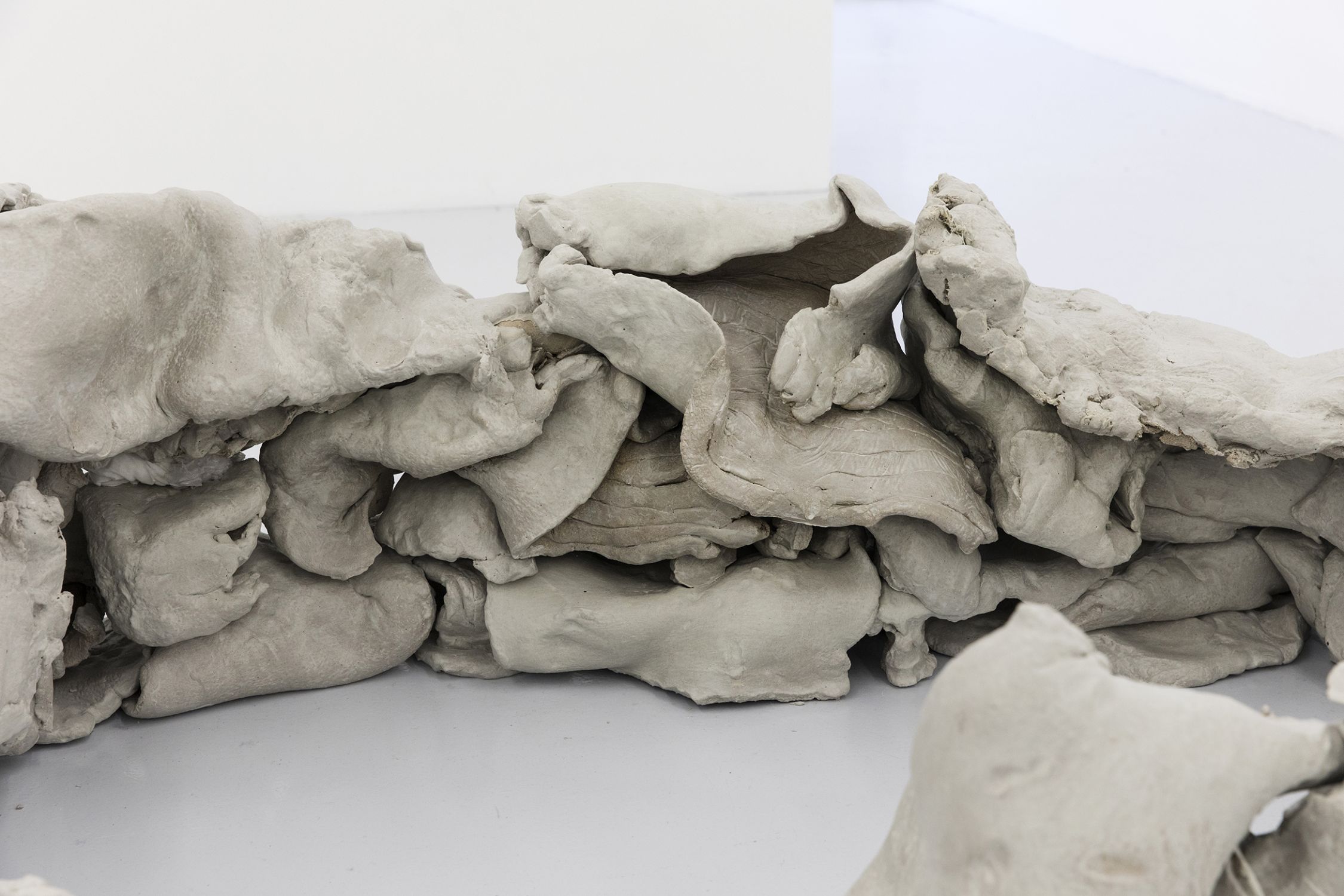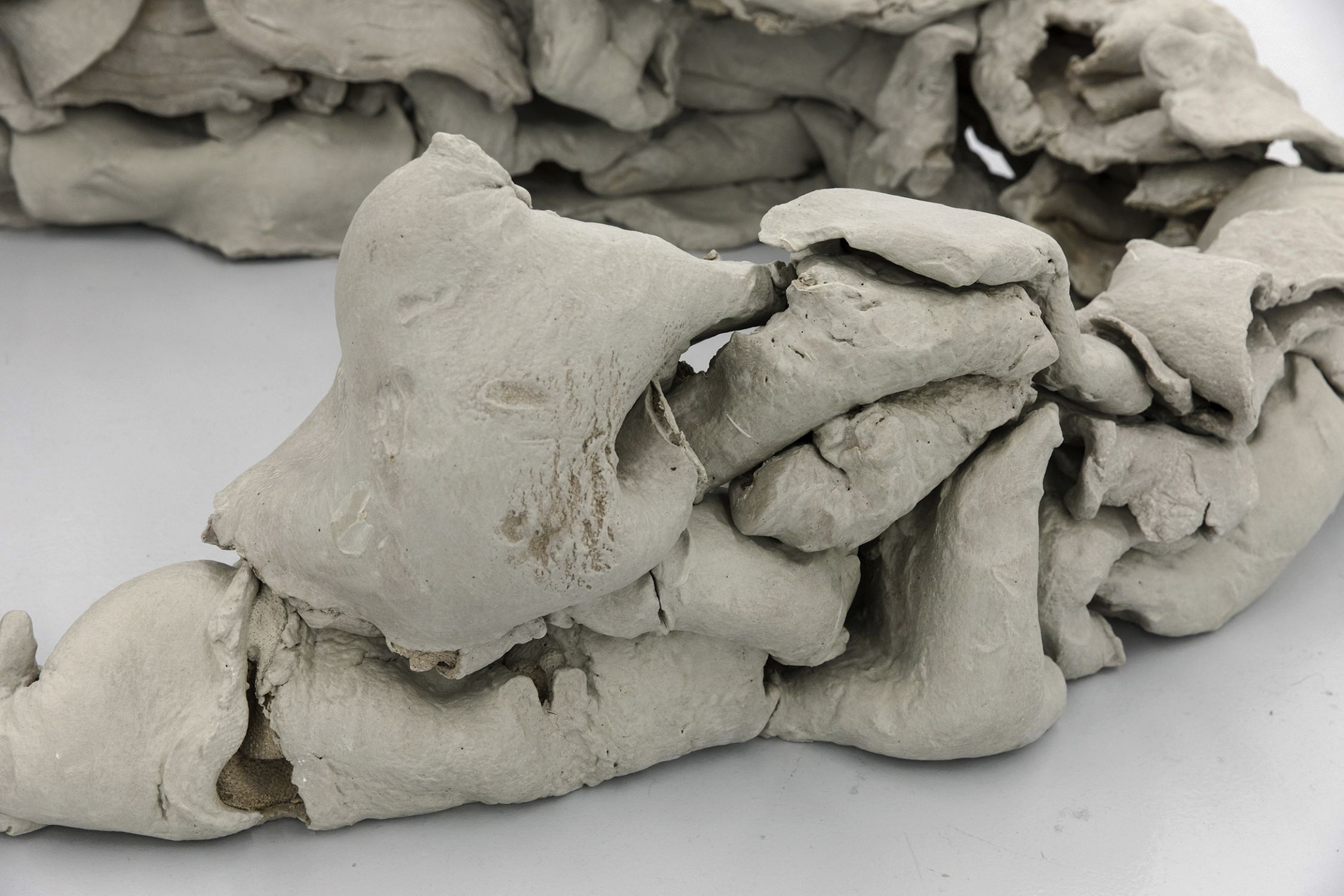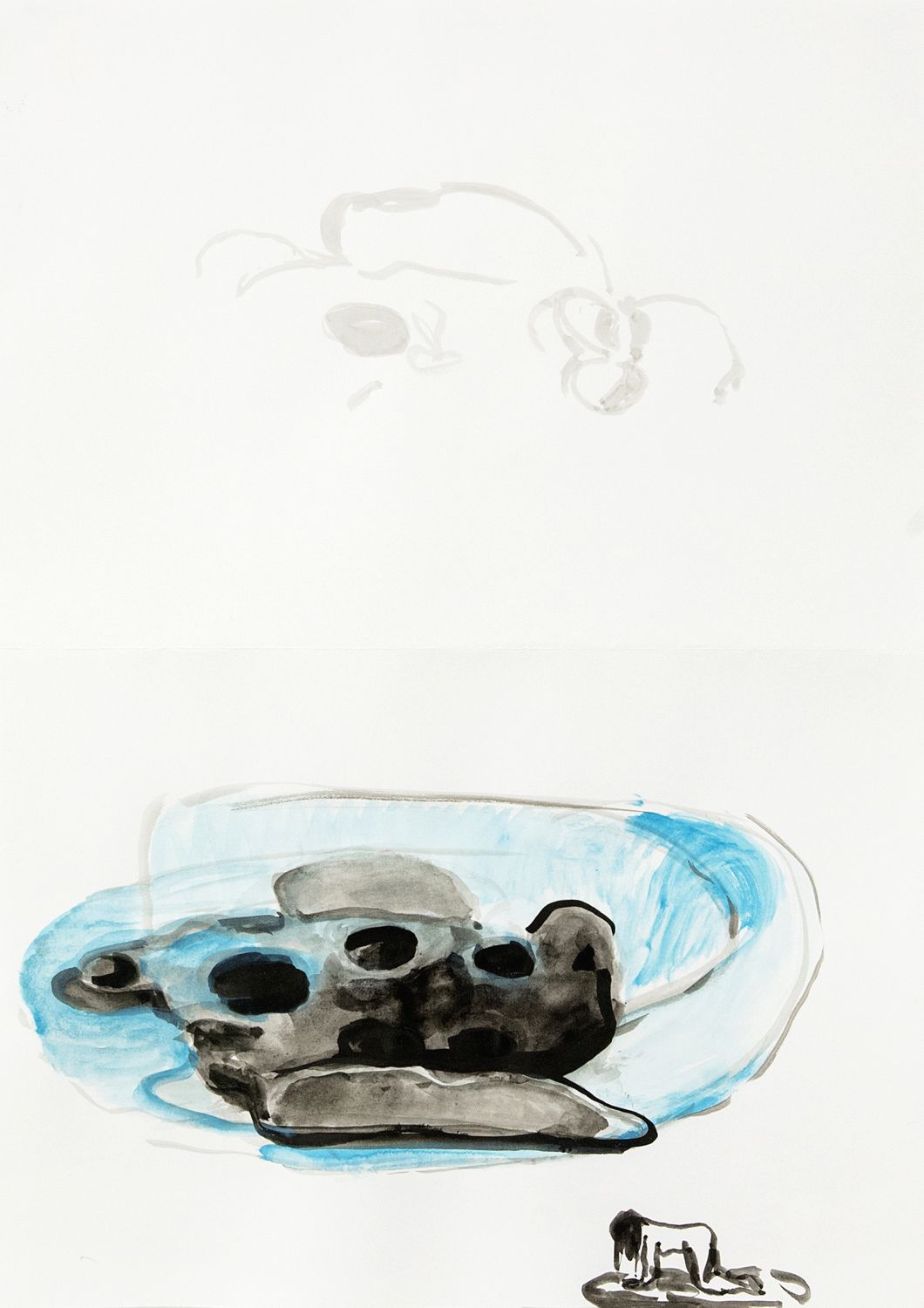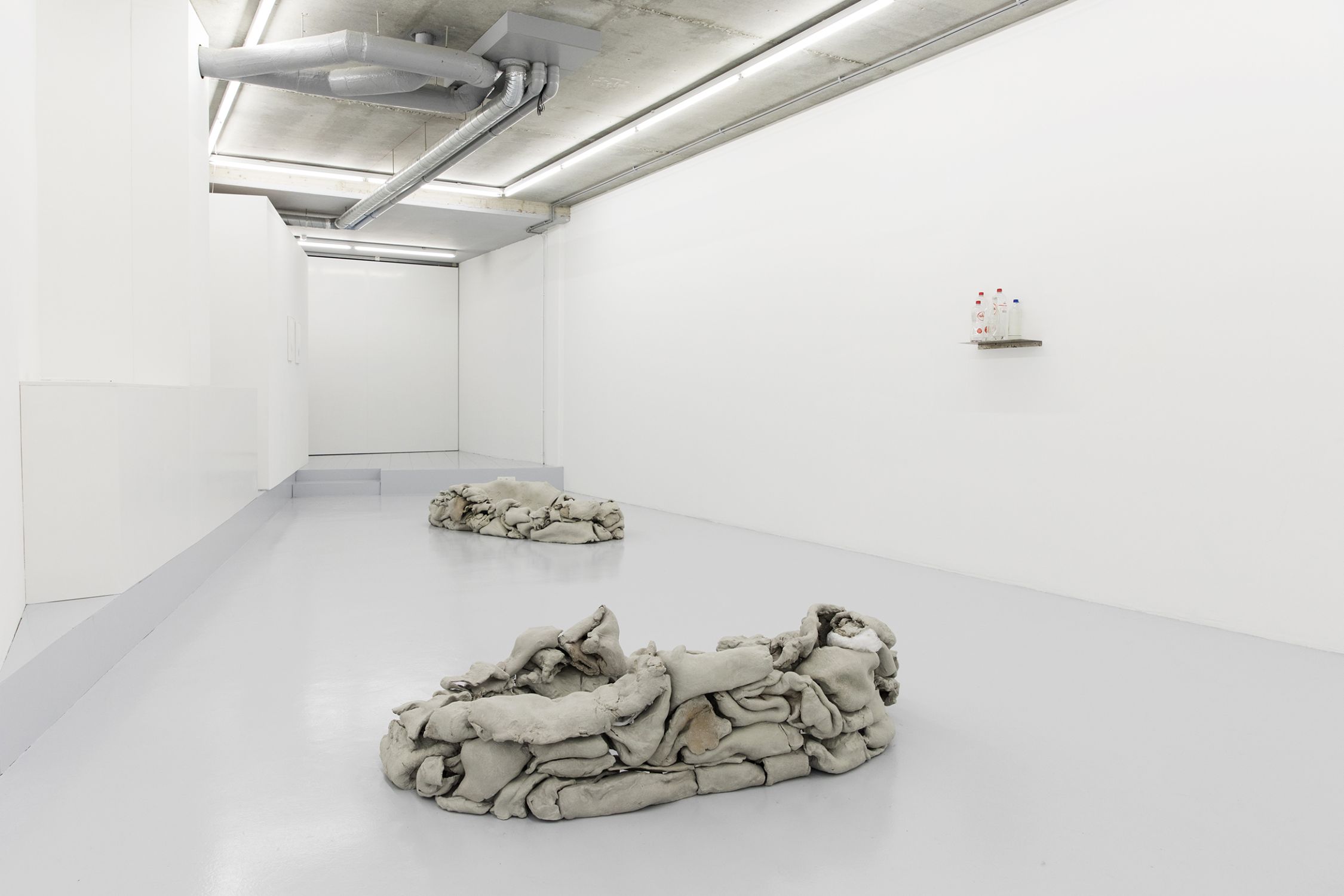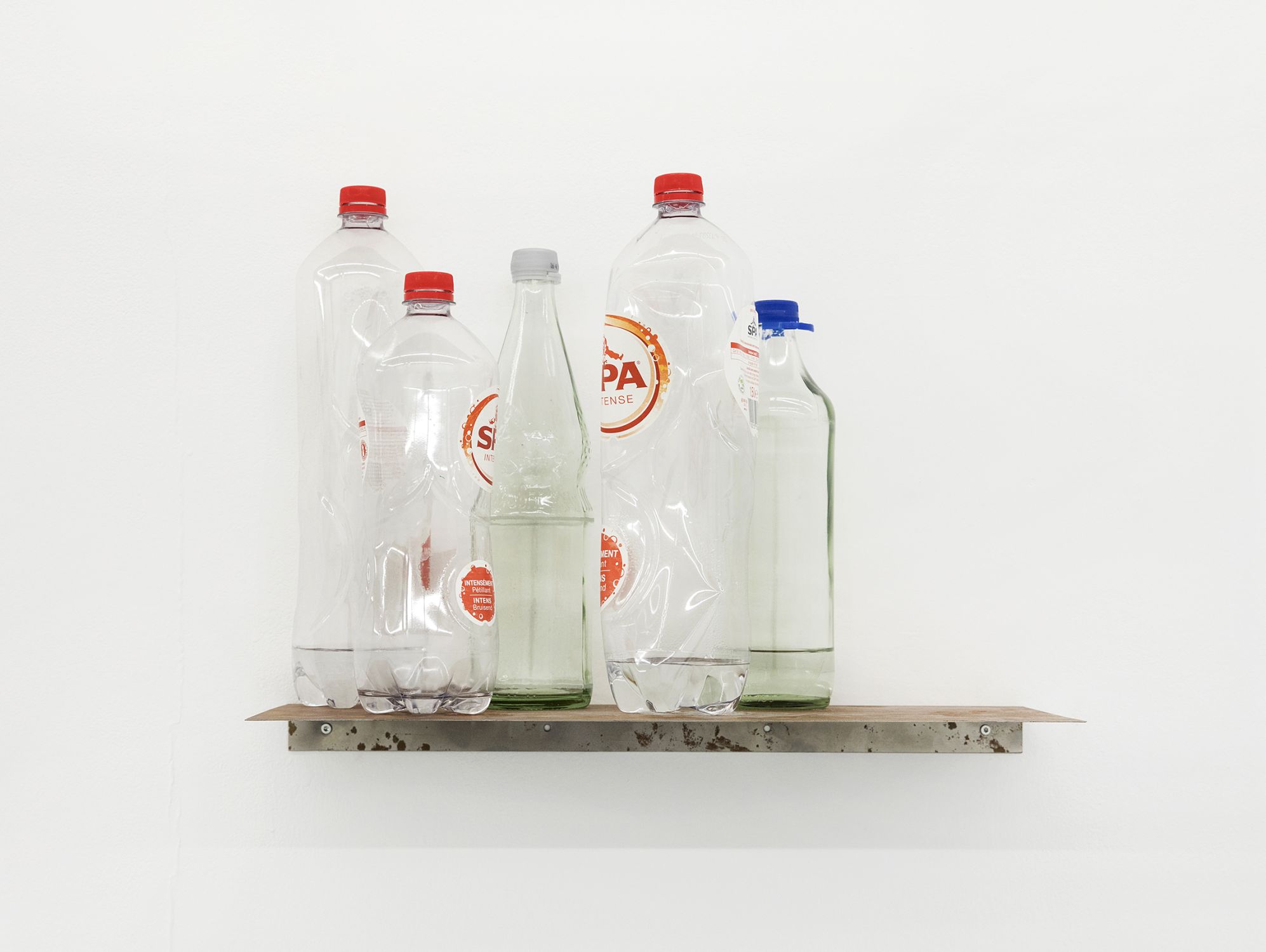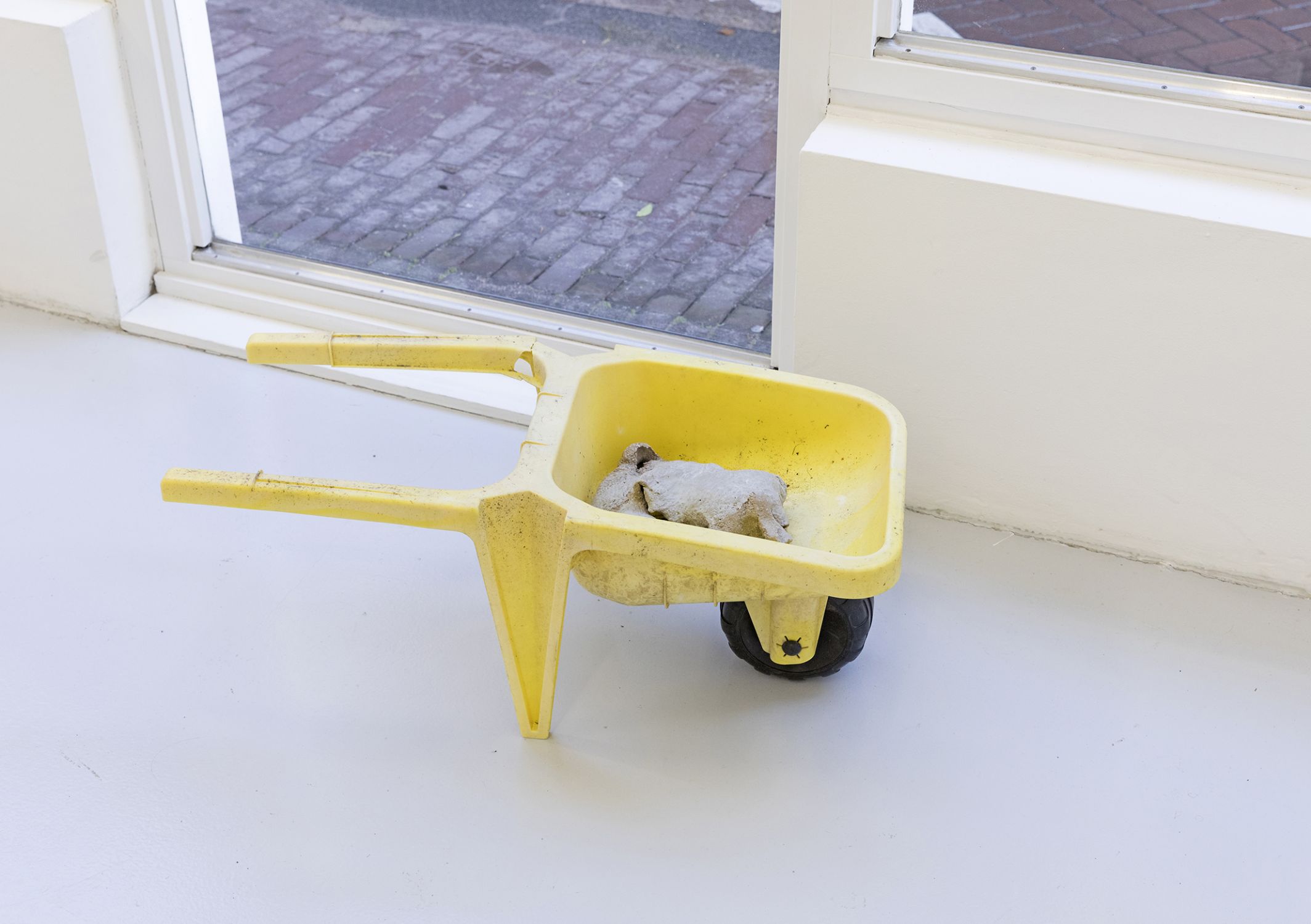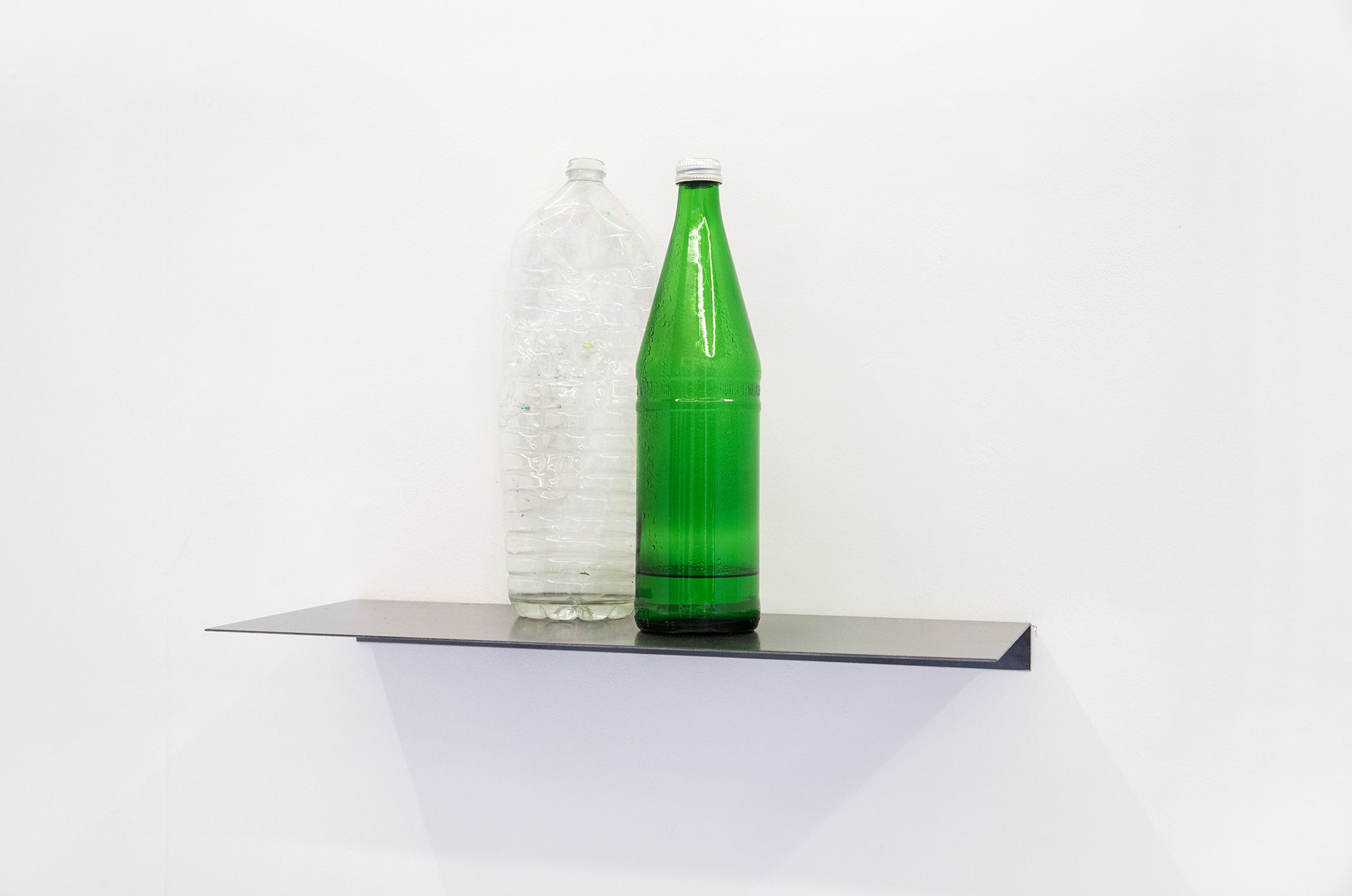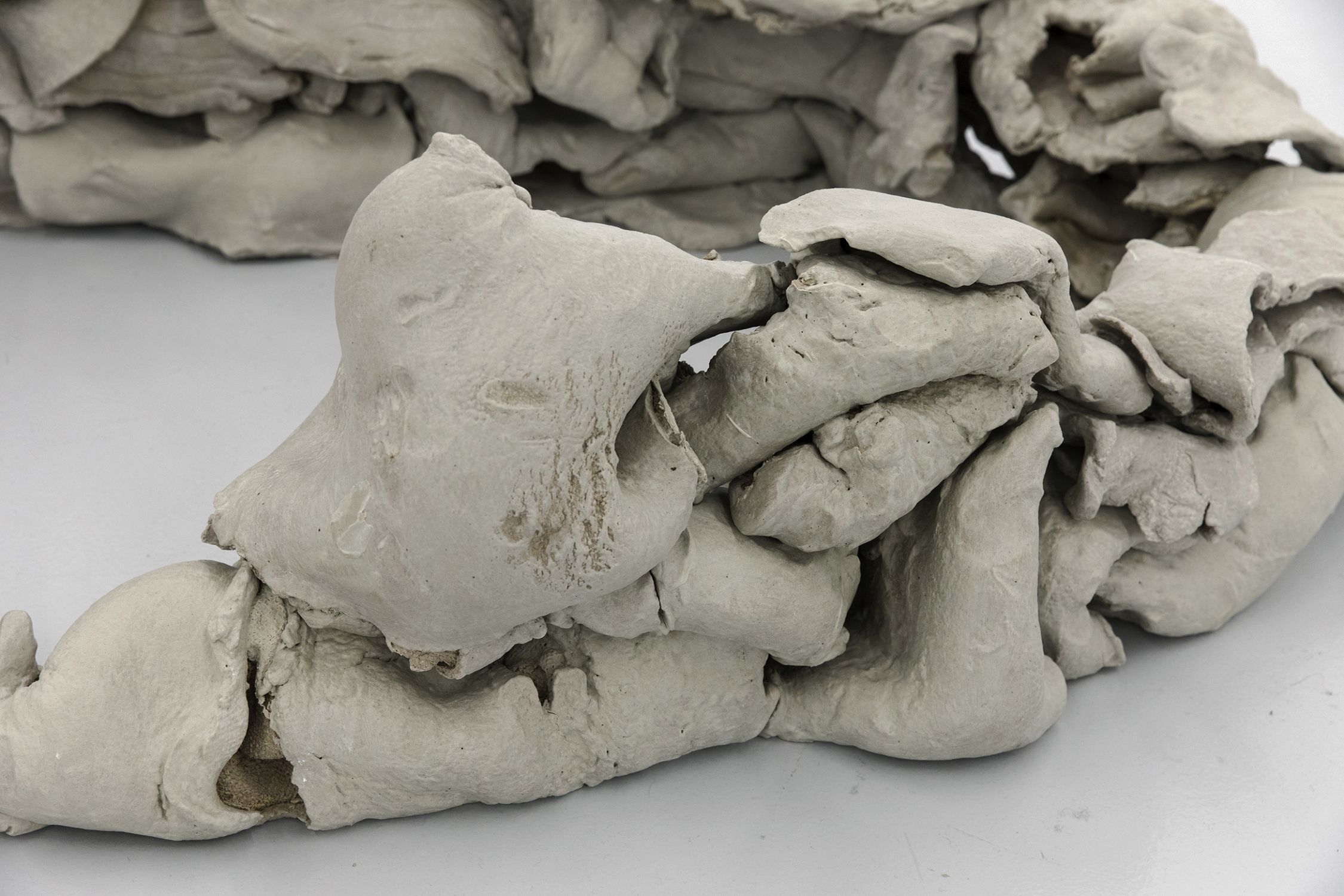About the work
The focal point of the exhibition are her recent sculptures – stacked pieces of clay structured into oval shapes and assembled around an empty centre. This methodology of assemblage creates a tension between the separate pieces that are autonomous sculptural shapes in their own right, and the larger shape that is formed by stacking them together. The size of each building block is defined by properties of a body: each piece has such a weight that the artist could carry it by herself.
The sculptures also pertain in a different way to the body; as a rough silhouette or outline. Reflecting on her process of sculpting the wet clay, then firing the elements, and ultimately placing the dried shapes back together, the artist herself states: “it is as if the sculptures are now bodies themselves that I reassemble like a puzzle”.
Whilst making the sculptures, Moldrickx came across a text written by Linda Nochlin about Pierre Bonnard’s last series of “Bathers”, assembling excerpts from it according to her own interpretation. She compares these to fragments of her sculptures, and treated them analogously:
"Simply stretched out horizontally... Passivity is the essence of the pose... Sombre and austere, reduced in colour... expansion in the elongation of forms; constriction in the tomb-like isolation of the tub-shape itself...Tomb/womb.... suggesting at once the beginning and the ending of life, inter-uterine bliss (or the baptismal font) and the coffin... the ghost of desire... the tepid
surface of the bathwater …"
*excerpt from a text Linda Nochlin sent to Suzanne Page in October 2005, much of which was
published as “Bonnard’s Bathers” in Art in America, July 1998, pp. 63–65, 103

